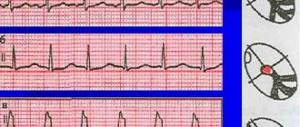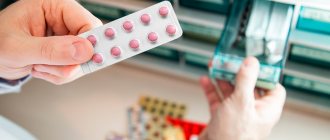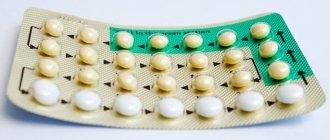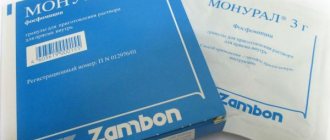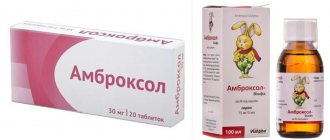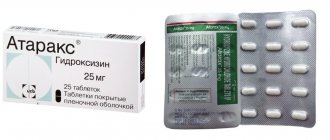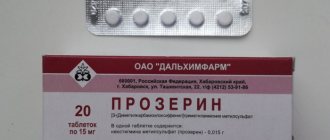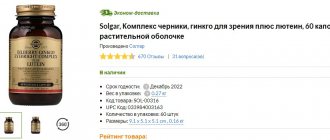When experiencing abdominal pain, many people do not think to analyze this condition or consult a doctor, but first take painkillers. However, these pains can be symptoms of quite dangerous conditions, and pain relief only delays the moment of making the right medical decision. Such conditions can include infections and inflammatory processes in the body, so tablets for abdominal pain should be prescribed to yourself carefully and cautiously.
Abdominal pain can be caused by both the banal threshold of the menstrual cycle and serious diseases and infections; therefore, having felt pain, it is very important to determine its nature, learn to distinguish between pains, but you should not self-medicate under any circumstances, since this is fraught with serious consequences.
Review
You can speed up the action of the pill or enhance its effect, minimize the risk of adverse reactions, or, on the contrary, get poisoned by taking the usual dose of the drug.
The regimen and method of use radically affects the work of many medications: from ordinary vitamins to potent drugs. After the tablet enters the body, it must dissolve in the digestive tract and penetrate through the walls of blood vessels into the blood. Then the active substance is distributed throughout the body and exerts its effect, after which it enters the liver, where it is destroyed and excreted with unnecessary metabolic products through the kidneys or intestines. This is the most common route taken by oral medications in the body.
What we eat and drink during treatment can slow down or speed up the absorption of the drug, interfere with its inactivation in the liver, or even remove the drug from the body in transit, without any effect. Therefore, it is important to know how to take pills correctly.
What should I take with my medications?
The universal liquid for washing down tablets is clean, non-carbonated, warm or room temperature water. Cold water slows absorption in the stomach and can, during illness, provoke nausea and vomiting. The amount of water should be at least half a glass (100 ml).
Only some medications can be taken with milk and are even beneficial. These are drugs from the group of non-steroidal anti-inflammatory drugs that we most often use for pain and fever: aspirin, ibuprofen, ketanov, analgin, indomethacin, voltaren and others, as well as steroid hormones: prednisolone, dexamethasone. Milk has a protective effect on the gastric mucosa and reduces the likelihood of the damaging effects of these medications on it. The exception is drugs from these groups in the form of tablets or capsules coated with an enteric coating (such information can be found on the packaging) - their contents are released only in the intestines.
It is usually not recommended to use mineral waters to wash down tablets, as they contain ions of calcium, iron and other elements that can react chemically with the components of the medicine and interfere with their absorption.
The most complex interactions are observed when tablets are taken together with vegetable and fruit juices: they can both weaken and enhance the effect of the drugs. On the “black list”: apple, cherry, pear, grape, lemon, orange, pineapple, beetroot, tomato, viburnum and many other juices. The most dangerous is grapefruit. About 70% of existing medications are incompatible with it, including blood pressure medications, heart medications and oral contraceptives. Drugs to lower blood cholesterol (atorvastatin, simvastatin, etc.) together with grapefruit juice cause massive destruction of muscle tissue and kidney failure. Moreover, for the development of an unfavorable effect, 1 glass of juice is enough, it all depends on the individual characteristics of the body. Therefore, it is recommended to stop drinking grapefruit juice three days before starting treatment with any medications (including injections).
It is not harmless to take some medications with tea and coffee. Tannins, catechins and caffeine contained in these drinks can play a cruel joke, for example, reducing the effectiveness of oral contraceptives. On the other hand, oral contraceptives increase the side effects of caffeine, which can lead to insomnia. Tea and coffee reduce the absorption of many other medications: antispasmodics, cough suppressants, glaucoma, etc. But paracetamol washed down with tea will relieve headaches faster, since caffeine increases the penetration of the drug into the brain.
The most explosive mixture can result from the combined use of drugs and alcohol of any strength. Ethyl alcohol and its metabolic products enhance the effects (including side effects) of psychotropic, antiallergic drugs, drugs for pain and fever, reduce the effect of antibiotics, diabetes drugs, drugs that affect blood clotting and anti-tuberculosis tablets. And the most dangerous thing is that in some cases, alcohol together with completely harmless drugs causes poisoning, even death as a result of liver failure. This most often happens when taking antibacterial, antifungal medications and paracetamol with alcohol.
Remedies for nausea and vomiting for gastrointestinal diseases
If you had to deal with an intestinal or toxic infection, then the first-line drugs for nausea and vomiting will be drugs that kill pathogens, slow down their growth and bind toxins in the intestines.
- Nitrofurans - furazolidone and nifuroxazide (Ersefuril, Enterofuril, Stop-diar) have the same effect. Therefore, in adults without concomitant diseases of the pancreas, you can use very cheap furazolidone (2 tablets 3 times a day for 5-7 days). It is great for vomiting and diarrhea. It is not advisable to take the medicine for more than 10 days. The choice in favor of nifuroxazide is justified in pediatric practice (suspension form and less effect on the pancreas).
- Antibiotics - ciprofloxacin, an antibiotic from a number of cephalosporins and the macrolide Azithromycin (Sumamed) can also be used for a number of intestinal infections.
Anti-vomiting drugs for diseases of the gastrointestinal tract are divided into the following groups: Metoclopramide (Cerucal), Dismenhydrinate (Dedalon, Dramamine), Prifinium Bromide (Riabal, No-Spazm), Hyoscyamine Butylbromide (Buscopan), Domperidone (Motilium).
Metoclopramide - Cerucal
Blockers of central and peripheral dopamine receptors (prokinetics) Cerucal (Metoclopramide) reduce the motor activity of the outlet of the stomach and duodenum, and prevent the backflow of intestinal contents into the stomach (with vomiting of bile). Indications: Effective for infectious and inflammatory changes in the stomach and intestines, as well as after abdominal surgery. Use tablets and intramuscular injections. For hiccups, vomiting, nausea of various origins, for diabetic gastroparesis. Contraindications: 1st trimester of pregnancy, epilepsy, pheochromocytoma, children under 14 years of age, prolactin-dependent tumor, gastrointestinal bleeding, intestinal obstruction, gastric perforation, with caution in the 2nd-3rd trimester of pregnancy, bronchial asthma, old age, arterial hypertension. Dosage: half an hour before meals, 1 tablet 3-4 times a day for adults, children over 14 years old, 1/2 tablet 2-3 times a day. Side effects: dizziness, depression, tinnitus, drowsiness, fear; in older people and adolescents, tremors, muscle twitching, tachycardia, diarrhea, constipation, dry mouth, menstrual irregularities, etc. may occur. |
Hyoscyamine butyl bromide - Buscopan
M-cholinergic receptor blockers relieve spasm of smooth muscles of the stomach and duodenum. Indications: renal, intestinal, biliary colic, in complex therapy of gastric and duodenal ulcers, algodismenorrhea, pylorospasm, biliary dyskinesia. Contraindications: children under 6 years of age, megacolon, myasthenia gravis. Application: 10-20 mg 3 times a day or in suppositories, used in adults and children over 6 years of age. Side effects: tachycardia, dry mouth, urinary retention, allergic reactions, anaphylaxis with episodes of difficulty breathing. |
Domperidone - Motilium
Indications: dyspeptic symptoms - belching, flatulence, vomiting, nausea, heartburn, bloating, vomiting of infectious, organic, functional origin. Contraindications: weight less than 35 kg, gastrointestinal bleeding, pituitary tumor (prolactinoma), simultaneous use with erythromycin, ketoconazole, etc. Application: 2-3-4 times a day are used in adults and children whose weight exceeds 35 kg. Side effects: gastrointestinal disorders, headache, convulsions, drowsiness, nervousness, anaphylactic shock, urticaria, Quincke's edema, itching, rash. |
When to take the tablets: on an empty stomach or after meals?
Given the fact that the active components of drugs can enter into unwanted connections with food, and the consequences of these connections are poorly understood, most drugs are recommended to be taken on an empty stomach.
If the instructions say “on an empty stomach,” this means that the medicine should be taken an hour before meals or 2-3 hours after. This regimen of administration, firstly, minimizes contact of the tablet with food. Secondly, it is believed that in the intervals between meals, the secretion of hydrochloric acid from gastric juice is minimal, which also affects the work of many medications. Thirdly, the medicine taken on an empty stomach works faster.
Attention, emergency!
There are situations when, in case of acute pain, it is necessary to urgently call an ambulance.
Appendicitis. Its symptoms are known. But – one clarification. Often, pain with appendicitis first appears in the center of the abdomen and later descends to the lower right quadrant.
Intestinal obstruction. Convulsive, spasmodic severe pain, frequent vomiting, bloating are ominous symptoms that indicate this dangerous condition. Often in such cases, emergency surgical care is necessary, otherwise everything can end in death.
Hepatic colic. A characteristic symptom is a sharp, severe pain in the right side, which radiates to the collarbone, scapula, and base of the neck. The patient may vomit bile, and sometimes the temperature rises. Most often, colic occurs due to strangulation of a stone in the neck of the gallbladder, in the bile ducts, or when an infection enters the gallbladder. In this case, the patient often needs to be hospitalized in order to urgently examine and determine the severity of the condition.
Perforation of an ulcer (stomach or duodenum). In this case, the patient suddenly develops a feeling of weakness, cold sweat appears, and a sharp and severe pain appears - “a dagger strike,” as doctors call it. An “opened” ulcer pierces the wall of the stomach, gastric juice flows out, which “burns” the peritoneum, and food debris that spreads the infection. Severe peritonitis begins to develop. Urgent surgery is needed.
Acute pancreatitis. In this case, acute pain occurs in the upper abdomen and under the ribs on the right and quickly spreads throughout the abdomen. Often the pain can be girdling and radiate to the back. The patient suffers from nausea, vomiting, the stomach is swollen, and the temperature often rises to 39–40°. Acute pancreatitis is dangerous because it can cause irreversible massive destruction in the pancreas. And lead to death.
Time of day and interval for taking medications
The daily amount of medication is usually divided into several doses to ensure a more or less constant concentration of the active substance in the body, as well as to reduce the single dose and the likelihood of side effects. Therefore, the instructions for the drugs and the note from the doctor usually say: 2-3 times a day. However, for some medications, the dose should be divided not throughout the daylight hours, but throughout the day. That is, a three-time dose means taking the medicine every 8 hours, a 4-time dose means taking the medicine every 6 hours, and so on.
Such a strict regime must be maintained, for example, during antibiotic treatment, which is often overlooked. If you take antibiotics irregularly, for example, taking a long break to sleep at night, the concentration of the active substance in the blood will fluctuate greatly. This is unlikely to cause overdose symptoms during the day, but at night it is highly likely to lead to the development of treatment resistance. That is, while you sleep, microbes adapt their metabolism to the antibiotic residues in the blood. Further treatment with this drug will be ineffective.
For convenience, many medications come in the form of long-acting tablets or capsules that can be taken only once a day. In the morning, they take diuretics, hormonal drugs, medications containing caffeine and adaptogens (ginseng, Eleutherococcus, Rhodiola rosea, etc.).
At night, they often take blood pressure medications (if a single dose is required), bronchodilators for asthma, sleeping pills and sedatives, many antiallergic drugs, as well as a number of medications for stomach ulcers.
Antiemetic drugs
Activation of the gag reflex occurs under the influence of a certain part of the brain. Thanks to the activity of this department, harmful substances are rapidly removed from the body. Anti-nausea and vomiting medications should be used with caution, since in addition to harmful substances, macro- and microelements that are necessary for the normal functioning of the entire body can also be excreted.
Such drugs can be divided into two groups:
- Medicines that suppress nerve impulses. Their use is appropriate for complex treatment of the main disease that caused unpleasant symptoms. Also used to prevent motion sickness while traveling.
- Drugs that eliminate the main cause of nausea and vomiting. This group includes drugs that have a positive effect on the intestinal microflora, restoring its activity, the main component of which is gastric juice enzymes.
In no case should you independently select medications that at first glance are suitable for your case. To get a positive result, you must contact a specialist for a full diagnosis and treatment, if necessary. Otherwise, you can cause irreparable harm to your health.
Remedies for motion sickness
Very often, traveling long distances frightens people due to a problem such as motion sickness. This occurs due to an underdeveloped vestibular apparatus. Sometimes even weak rocking causes feelings of nausea, decreased blood pressure and dizziness. Such symptoms during travel are typical not only for adults, but also for children. There are a large number of drugs that can help adapt to vehicles and relieve discomfort . These medications include:
Dramamine. A very popular antihistamine that can be used from two years of age. The drug reduces signs of vomiting and nausea by blocking receptors in the inner ear. Must be used 30 minutes before travel. If necessary, the procedure can be repeated after five hours.
- Air-sea. A medicine with homeopathic action, in a short period of time reduces the sensations of vestibular disorders. Approved for use by children aged six years and older. Use one hour before the trip and, if necessary, every one and a half to two hours.
- Aeron. The main components in its composition are scopolamine and hyoscyamine, due to which the effect of acetylcholine on M-cholinergic receptors is reduced. The main function of the drug is to relax the smooth muscles of the digestive system.
Vertigohel is also a very popular remedy for motion sickness in transport. In the process of its activity, it affects the human nervous system. Thanks to the herbal components in its composition, the effect of the drug increases. It is also allowed to use it as a prophylaxis to reduce feelings of nausea while traveling.
Frequent use of Vertigohel does not have a negative effect on the body, since the main components are natural substances.
Medicines during pregnancy
This important period in a woman’s life is characterized by increased sensitivity to smells and food both in the early and late stages. Starting their day with morning sickness, many women find out they are pregnant.
As a rule, if the frequency of urges is no more than ten times daily, special medications for vomiting and nausea are not used. If the number of nauseas exceeds 20 times a day, it is recommended to consult a doctor who will offer special treatment.
Severe intoxication of the body can interfere with normal gestation and the supply of necessary nutrients. Therefore, you should definitely visit a gynecologist and tell him about your condition.
The following drugs are allowed during pregnancy:
- Hofitol. A medicine made from natural ingredients, the main one of which is artichoke. You can take one tablet dissolved in warm water up to three times a day before meals.
- Splenin. A potent drug that is administered intramuscularly in a hospital under the supervision of a doctor. The course of treatment is no more than 10 days.
- Kokkulin. A drug with a homeopathic effect, the main advantage of which is its low price and long-lasting effect.
- Bonin. A potent medicine, you are allowed to take no more than one tablet per day. May cause side effects: increased fatigue, weakness, apathy.
It is also allowed to drink herbal soothing teas based on mint, valerian, and calendula. It is better to check in advance the reaction of the body that occurs when using it and consult with a specialist.
Such manifestations of the gag reflex and nausea are not always symptoms of intoxication. Sometimes these signs may indicate the presence of problems with blood pressure, the development of preeclampsia, as a result of which the life of the mother and baby may be at risk.
Medicines for poisoning
In case of poisoning, vomiting and nausea are natural symptoms, due to which the body tries to remove the substances that caused intoxication as quickly as possible.
Doctors do not recommend preventing vomiting in this case, but you need to use detoxifying medications that will speed up the removal of substances from the body and contribute to a faster recovery.
List of medications that will help with poisoning:
- Medicines of the nitrofuran group. They quickly and effectively reduce the feeling of nausea, prevent diarrhea and vomiting. In addition, they eliminate other signs of digestive system disorders. Some of the most effective and popular of this group are medications called: “Cerucal”, “Stop-Diar”, “Ersefuril”, “Enterofuril”.
- Antimicrobial drugs of the ciprofloxacin group. Allowed to be used for intestinal infections at different stages. These include “Sumamed” with the main substance azithromycin in its composition.
- "Nifuroxazide". Mainly used in pediatrics. You can use the medicine for nausea and vomiting for children, as it is available in liquid form.
In addition to eliminating signs of poisoning, you also need to use means to restore the body. During vomiting, in addition to harmful substances, large quantities of mineral salts and liquid are removed from the body. For this reason, it is necessary to restore reserves by drinking water, as well as medications such as Regidron. It can also be administered intravenously for severe dehydration.
For diseases of the gastrointestinal tract
If intestinal or toxic infections have been diagnosed, the doctor must include in the treatment regimen drugs that kill the causative agent of the disease. Thanks to them, the rate of spread of infection decreases and the binding of toxins produced by microbes occurs. The resulting compounds cause nausea and activation of the gag reflex. Also, discomfort can occur when there is no movement of the food bolus due to insufficient secretion of gastric juice.
Treatment of various diseases should be individual and comprehensive. For this reason, which medications should be used should only be decided by a qualified specialist.
Nitrofurans . One of the most popular and frequently used drugs for vomiting and nausea of infectious origin are nitrofurans. Most bacteria and microbes are sensitive to this group of medications. A course of taking the drugs will contribute to the complete disappearance of unpleasant sensations, regulation of digestion and normalization of peristalsis. Effective medications in this group include:
- Furazolidone.
- Nifuroxazide.
These drugs are not antibiotics, so their use will not contribute to the development of dysbiosis. Most of the drugs in this group are harmless to children and pregnant women.
Antibiotics . The main symptoms of food poisoning include nausea. By consuming expired products or poor-quality water, staphylococci, salmonella and other pathogenic bacteria enter the stomach. Antibiotics will help fight them. Due to the fact that the results of the studies need to wait at least several days, doctors are forced to react quickly and prescribe medications with many functions:
- Ciprofloxacin (Tsifran, Tsiprolet).
- Azithromycin (Sumamed, Azitrox).
- Cephalosporins.
The dosage and duration of treatment with a particular drug are prescribed by a qualified specialist. Most often, after a few days, the medications begin to work, the feeling of nausea decreases, and the number of vomiting decreases.
Antispasmodics . Cholecystitis and other diseases in which the activity of smooth muscles of the gastrointestinal tract decreases also causes nausea. As a result of these pathologies, food is not fully digested, and dyspeptic disorders develop. In this case, doctors prescribe drugs that relieve spasms:
- Duspatalin.
- Hymecromone.
They have a targeted effect on the source of the disorder within a few minutes after consumption. Duspatalin and Gimecromon do not affect the smooth muscles of the digestive system, so they have almost no contraindications.
Domperidone . This is a universal remedy for many pathologies of the digestive system. After its use, the activity of the gastrointestinal tract accelerates, the main symptoms decrease: nausea, vomiting, constipation, diarrhea. Domperidone is the active ingredient in the following drugs:
- Motilium.
- Passengers.
Medicines are available in the form of tablets and suspensions for children with mint flavor. Answering the question of what Motilium and Passazhix help with, it must be said that their main function is to eliminate nausea that has arisen from the use of medications (cytostatics, acetylsalicylic acid, NSAIDs). Thanks to medications with Domperidone, the body is cleansed, eliminating unpleasant signs of putrefaction and fermentation in the stomach, which appeared from drinking large quantities of alcoholic beverages and overeating.
If symptoms such as vomiting and nausea occur, it is recommended to immediately consult a doctor, since the symptoms are not without cause and may appear due to the presence of serious diseases. Only a qualified specialist can prescribe a drug for treatment, replace an inappropriate one and monitor the overall clinical picture.
Forgotten pill rule
If you forgot to take a pill, estimate how much time has passed since “X”. Depending on the period of delay, three options are possible. First: if it is very close to the next dose, skip the forgotten pill completely, but keep in mind that the effect of the treatment may be reduced. The second option is that you take the medicine as soon as you remember it, but take the next dose according to the old schedule. This can be done if you take the medicine 1-2 times a day and at least half the time period remains before the next dose. You cannot double the dose of medication at one time. The third option to fix everything: you take a single dose of the medicine and start a new countdown, that is, shift the dosage schedule by the number of hours missed. This is the most rational method for short-term treatment, for example, if you have been prescribed antibiotics for 5-7 days.
Anti-vomiting tablets for children
Tablets for nausea in a child should only be prescribed by a doctor. Very often, immediately after nausea, the child begins to vomit, which threatens dehydration literally in a short time. Therefore, in relation to children, the tactics of parents’ behavior in case of sudden vomiting should be as follows.
- Calling an ambulance. If a child has an acute surgical pathology (intussusception, pyloric stenosis, appendicitis), or a traumatic brain injury, or signs of irritation of the meninges, or an intestinal infection (for children under one year old), immediate hospitalization is required.
- If a child is over a year old and has a mild intestinal infection without prolonged vomiting, he is examined by a pediatrician who prescribes nitrofuran or an antibiotic for seven days. If stool culture has been performed and the causative agent of the infection has been identified, a bacteriophage may be prescribed.
- At the same time, water and minerals lost through vomiting are restored with solutions of Hydrovit, Regidron and 5% glucose in a ratio of 2 to 1. During the first six hours, you should drink 100 ml of liquid per kg of weight (a teaspoon every 5-10 minutes), then continue drinking 100 ml per kg of weight per day.
- A child can be given Cerucal (Metoclopramide) in a tablet if he is over 6 years old. For young children, the drug is administered intramuscularly (1-2 ml).
- Motilium in suspension 0.25-0.5 ml per kg of body weight 3-4 times a day.
For vomiting of central origin (most often caused by intracranial hypertension), children are given magnesium sulfate intramuscularly, Diacarb is given, or Dexamethasone is administered.
In children under one year of age, the cause of fountain vomiting (see causes of regurgitation in infants) may be a narrowing of the outlet of the stomach (pylorospasm) or its congenital closure (pylorostenosis). Stenosis can only be treated surgically, but spasm can be eliminated by administering belladonna or Atropine.
Can I split tablets and open capsules?
If the tablet does not have a groove (scores, notches) to separate it into parts, most likely it is not intended for consumption in pieces. As a rule, these are all drugs that are coated with a protective coating. If they are broken, dissolved, chewed or crushed, they reduce their effectiveness. However, this can be neglected when emergency assistance is required.
When taken orally, the tablet begins to act after an average of 40 minutes. If you need a quick effect, you can put the medicine under your tongue or chew it thoroughly and keep it in your mouth with warm water. Then the absorption of the medicine will begin directly in the oral cavity and the effect will occur within 5-10 minutes.
Gelatin capsules consisting of two halves are also not recommended to be opened. The shell protects the contents from contact with air, accidental entry into the respiratory tract (which can cause irritation) or is destroyed only in the intestines, ensuring the drug is delivered precisely to the target without loss.
However, exceptions are sometimes made to this rule. Tablets and capsules are divided into parts if a person cannot swallow a large capsule or titration of the medicine is required (individual dose selection). These cases should be discussed with your doctor.
Is it possible to avoid side effects of medications?
Compliance with the doses, regimen and rules for taking medications allows you to minimize the risk of side effects, but you cannot completely protect yourself from troubles during treatment. You need to be alert. Most complications become noticeable in the first days of therapy. These are various types of allergic reactions, nausea, abdominal pain, stool disturbances, headaches, swelling and other manifestations that usually disappear when the drug is replaced with a similar one or after treatment is stopped.
The delayed and most severe complication of treatment is liver failure; renal function is less commonly affected. These organs are involved in the neutralization and removal from the body of almost all medications, including those that many of us take lightly: oral contraceptives, drugs for blood pressure and arrhythmia, lowering blood cholesterol, drugs for joint pain. By the way, it is these drugs that most often cause drug-induced hepatitis when taken for a long time.
The insidiousness of drug-induced liver and kidney damage is that the initial stages of the disease, when everything can still be easily corrected, are asymptomatic. Therefore, everyone who takes medications for a long time needs to do a biochemical blood test and a general urine test every six months. These basic tests allow you to monitor liver and kidney function. In case of significant deviations from the norm, it is necessary to interrupt treatment and consult a doctor.
Other articles on topics:
All site materials have been checked by doctors. However, even the most reliable article does not allow us to take into account all the features of the disease in a particular person. Therefore, the information posted on our website cannot replace a visit to the doctor, but only complements it. The articles have been prepared for informational purposes and are advisory in nature. If symptoms appear, please consult a doctor.
A sedentary lifestyle, sedentary work, poor diet, pregnancy and rectal diseases are common causes of constipation. To eliminate this unpleasant problem, use a laxative to regulate stool. Tablets with a laxative effect “Senade” effectively help against constipation in children and adults. They are made on the basis of natural raw materials obtained from the Senna aquifolia plant. One tablet of this laxative contains 13.5 mg of calcium salts of sennosides A and B. Let's look at how to take senade.
How to take Senade tablets
When taking the medicine, the laxative effect is caused by the action of the active components of the drug (sennosides A and B) on the receptors of the colon. This leads to the fact that the active substance of the drug stimulates intestinal motility and causes defecation. The use of this laxative does not lead to changes in stool. This means that the bowels are emptied with normal stools and not diarrhea. Contraindications for taking laxatives:
- intestinal obstruction;
- spastic constipation;
- strange abdominal pain;
- peritonitis;
- cystitis;
- inflammatory processes in the abdominal cavity;
- bleeding;
- allergy to the components of the drug.
For constipation
The use of the medicine helps solve the problem with bowel movement. The drug can enhance the peristalsis of the large intestine, so it is advisable to use it for constipation associated with hypotension and sluggish peristalsis of the colon, as well as for functional constipation. A safe laxative will help cope with the problem of bowel movement during pregnancy, after surgery and with insufficient peristalsis in the elderly and children.
For hemorrhoids, anal fissures and proctitis, a laxative is used to regulate stool. In this case, to facilitate bowel movements and eliminate pain, it is recommended to do oil enemas before bowel movements. The drug is usually taken once a day before bed or 30 minutes before meals. The tablet must be taken with plenty of water.
The effect of taking Senade appears after 8-10 hours. But if you want to speed up the process of action of the drug, then you need to drink several glasses of slightly salted water. In this case, the laxative will take effect within 6-8 hours. When self-medicating, the drug should not be taken for more than 3-5 days.
How to take Senade correctly for children over 12 years old and adults? For this category of patients, treatment with the drug begins with 1 tablet per day. If there is no bowel movement after 3 days of use, increase the dose of the medicine by ½ tablet. For the next 3 days, take 1.5 tablets of the medicine. According to this regimen, on the recommendation of a doctor, you can increase the medication intake to 3 tablets per day. This is the maximum daily dose of the drug, which is not recommended to be exceeded due to health risks.
The absence of bowel movements after taking the maximum dose for 3 days is a serious reason to consult a doctor for medical help. How to take senade correctly for pregnant women? Expectant mothers should use the drug with caution. For prolonged constipation (more than 2 days), this drug is not recommended for women due to the risk of miscarriage. For constipation lasting less than 2 days, the question of whether to take medication should be discussed with your doctor.
How to take senade correctly for children 6-12 years old? Children from 6 years of age with constipation drink a laxative before bed, ½ tablet per day. If there is no laxative effect, increase the daily dose to 1 capsule. The maximum daily dose for this category is 2 tablets. Children begin taking the drug with a minimum dose of 0.5 tablets. But with prolonged constipation, the child can be given 1 tablet at once. If a child has taken the maximum dose of the drug (2 tablets) for 2 days, but bowel movements have not occurred, then it is necessary to contact a pediatrician.
Types of tablets for temperature. Active substances of drugs
The reason for the increase in temperature is the mediator prostaglandin E, which provokes inflammation. Anti-inflammatory drugs block the process of synthesis of this mediator. It is because of the disruption of prostaglandin that the body temperature decreases. Antipyretic drugs come in several types.
1st generation products
They quickly prevent inflammation, but have side effects: impaired kidney and liver function, gastrointestinal diseases.
These include:
- Paracetamol.
- Aspirin.
- Citramon.
- Analgin.
Active ingredients of 1st generation tablets:
- metamizole sodium (analgin);
Tablets for fever for adults. The list of ingredients includes metamizole sodium.
- indomethacin (Metindol);
- paracetamol;
- ibuprofen (Nurofen);
- acetylsalicylic acid (Aspirin, Citramon);
- diclofenac (Diklak);
- phenylbutazone (Butadione).
2nd generation products
Active ingredients 2nd generation:
- coxibs (found in Celebrex, Vioxx);
- meloxicam;
- nimesulide (Nise, Nimesil).
These tablets have an anti-inflammatory effect and reduce pain.
They have side effects - cardiovascular system disorders.
2nd generation drugs are safer than 1st generation drugs. They not only eliminate inflammation, but also correct body temperature.
Combined products
Combination drugs gained popularity 10 years ago. They can bring down the temperature and relieve pain at the same time. This type of medicine includes ibuprofen, which contains 2 active substances.
Doctors recommend not taking combination antipyretic pills. According to experts, too many pharmacological substances enter the body. Combined drugs are taken if 1st and 2nd generation drugs do not help individually.
The principle of action of all drugs is almost the same, but each has its own degree of antipyretic and analgesic effect. You cannot take several antipyretics at the same time. A form of anti-inflammatory, fever-reducing medication available to everyone is tablets. Injections are used in severe cases.
People's reviews of laxatives
Galina, 35 years old This medicine helped me after surgery, when I had problems with bowel movements. Mom advised me to take 2 tablets and wash them down with several glasses of water. The effectiveness of Senade turned out to be very high, but its effect was accompanied, in my case, by abdominal pain.
Elena, 30 years old After giving birth, I experienced severe constipation. A friend who works as a pharmacist recommended that I take 1 tablet of Senade. This drug helped me a lot to get rid of constipation. I took it just once and the problem was solved within a day. The laxative acts gently and quickly.
Yulia, 25 years old I would like to share my sad experience of taking the drug incorrectly. At first I took it after overeating. I liked its effect, so I decided to take it constantly for weight loss. After 2 weeks, the laxative stopped working, but health problems arose in the form of headaches and intestinal obstruction.
Tatyana, 39 years old Excellent laxative tablets. From time to time I take them to regulate bowel movements. I take pills after a heavy lunch. They act gently, without spasms and pain. I tried different medications for constipation, but this laxative worked better for me than others. I am also pleased with the low cost of this medicine and its natural composition.
How many days can you take Nise tablets?
Nise is a non-steroidal, anti-inflammatory, antipyretic drug. Used for: joint pain, rheumatism, arthritis, headaches and toothaches, and diarrhea of an infectious-inflammatory nature.
Adults take one tablet twice a day before meals; a quick effect is achieved if the tablet is dissolved in a teaspoon of water. For severe pain, the doctor may increase the dose to 400 ml (4 tablets per day). Children from 3 years to 12 years old should take Nise suspension.
Elderly people should take Nise tablets very carefully; the medicine is aggressive, but side effects do occur.
The course of treatment for adults is ten days, for children 5 days. If you follow the dosage prescribed by the doctor and the correct treatment regimen, the tablets can be taken for 15 days.
Pregnancy
Morning sickness most often occurs in early pregnancy. The female body adapts to changed circumstances, and a side effect of such adaptation is an attack of nausea. An interesting fact is that with a desired pregnancy, the likelihood of developing toxicosis is reduced.
In case of severe toxicosis, accompanied by constant nausea, the doctor may prescribe treatment. Antihistamines may be required. In extremely severe cases, antiemetic drugs are prescribed. To improve liver function, hepatoprotectors are prescribed. Enterosorbents will help cope with intoxication. A combination of medication and psychotherapy may be required.
In the early stages, it is better to avoid taking any medications at all. During this period, the formation of the internal organs of the fetus occurs. The use of synthetic substances can cause the development of pathologies. But not all medications are contraindicated for pregnant women. There are products that do not penetrate the placental barrier and do not harm the baby. These medications include herbal tablets.
Hofitol
This is a drug of natural origin, the main component of which is artichoke leaf extract. Hofitol has choleretic properties. It should be taken before meals. The active substance accelerates bile secretion and promotes its rapid outflow. Thanks to this, the liver and stomach are unloaded, and the state of nausea goes away.
Hofitol is an anti-nausea pill that is allowed during pregnancy
Hofitol is usually prescribed in a course of two to three weeks, one tablet three times a day. The product is contraindicated in case of individual intolerance to artichoke.
Cerucal
These are another pills for nausea and vomiting. The active component is metoclopramide, a substance that prevents the flow of vomiting impulses from the stomach to the brain. Cerucal is available in ampoules and tablets. It should be taken before meals.
Cerucal can be used against vomiting starting from the second trimester of pregnancy. Only in extreme cases is it prescribed to women in the first trimester. This is an effective drug, but it is usually only recommended when there is a serious threat to the mother's health.

